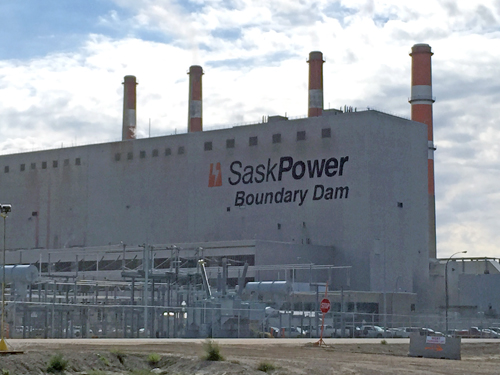Insights and Commentaries
Boundary Dam after one year of operation
15th October 2015
Topic(s): Carbon capture, Engineering and project delivery, use and storage (CCUS)
Just over one year ago, SaskPower’s Boundary Dam Carbon Capture and Storage Project (BD3), the world’s first commercial scale power plant with a fully integrated carbon capture system, was in the global spotlight when it began operations. Two more commercial-scale power plants with carbon capture and storage (CCS) are expected to come on-line next year – Southern Company’s Kemper Energy Facility in Mississippi and NRG’s Petra Nova facility in Texas. In the following Insight the Global CCS Institute's Principal Manager for Carbon Capture, Ron Munson, discusses some of the important lessons from the first year of operating CCS at a full-scale power station.
Key lessons following one year of operation at Boundary Dam
At the September SaskPower Symposium held in Regina, Saskatchewan, SaskPower’s Manager, Supply Development – Carbon Capture, Corwyn Bruce, reviewed the past year of operations at BD3 and discussed the future of CCS in Saskatchewan and beyond. Highlights of that presentation are summarised below.
Figure 1: SaskPower Boundary Dam Plant

Source: Author supplied
Operational Highlights
One of the significant operational highlights of BD3 is that the power plant has delivered 115 to 120 megawatts (MW) to the grid while the capture system has been operating. This is an important improvement over the 110 MW that was anticipated prior to commissioning, and represents a significant reduction in the energy penalty.
The capture system has been online 65 per cent of the time since start-up. During operation immediately following commissioning, downtime was largely associated with addressing issues associated with standard, off-the-shelf components as opposed to items specifically designed for the capture system. One such component included a steam temperature control system that did not work properly. This led to reboiler temperatures that were too high, degrading the amine solvent. In the early phases of operation the capture system was shut down in an attempt to address this issue, without much success. At that point, a decision was made to continue operations at the elevated temperatures until the steam temperature control system could be fixed (which occurred in June), with the understanding that thermal degradation of the solvent would continue.
Another issue encountered early in the operational schedule was associated with residual fly ash, which clogged demisters and resulted in contaminant accumulation in the solvent. This issue has been resolved, and operations in the third and fourth quarters have been largely predictable.
When looking at the power plant and capture system as a whole, the power plant reliability targets have been met. The reliability targets for the capture system have not yet been attained due to some of the early issues noted above and the ongoing process of learning how the capture process needs to be operated. However, there is high confidence that the targets will be met in the very near future. It can be stated unequivocally that the technology works at power plant scale.
Future Opportunities
There has been a great deal learned from the BD3 commissioning and start-up process that would reduce future retrofit times and costs. As with most any first endeavour, some actions are taken that would not be repeated on subsequent attempts, and understanding is gained about actions that should be focused on in the future.
An important consideration going forward will be to reduce design margins for the capture system. As a first-of-a-kind project, the importance of demonstrating that the technology worked was at the forefront of the design process. With that in mind, the system was, to a certain extent, over-designed. Now that the demonstration has been successful, margins can be tightened, reducing capital and engineering costs.
A thorough evaluation of the trade-offs associated with modularisation versus economies of scale will be an important consideration for future work. One component of a modular approach is to maximise off-site fabrication. This can lead to improved reliability and quality and lower front-end costs. In addition, a modular approach has the potential to address fleet-wide capture needs. It is possible that construction of multiple, identical capture systems to be installed on power stations throughout the SaskPower system would be more economical than the design and construction of individual systems on a plant-by-plant basis. This approach is currently being evaluated for potential future application.
In terms of future options related specifically to the power plant, the BD3 system included a Hitachi dual-mode turbine with enhanced steam and thermal integration, and the capability to handle power up or down of the capture system. This provided assurance that the power plant could operate at full load whether or not the capture system was in operation. This had a major impact on cost. The first year of operation has indicated that for future efforts, this dual-mode capability will not be needed.
Summary
This first year of operations at BD3 has presented significant challenges, but also provided opportunities for learning that are relevant to future capture efforts. At the launch of BD3, SaskPower indicated that cost reductions of 20 to 30 per cent were achievable if a similar project were to be pursued again. After one year of operation that estimate has been reinforced, and SaskPower is anxious to apply their learnings to future projects and share the knowledge they have gained with the larger CCS community.